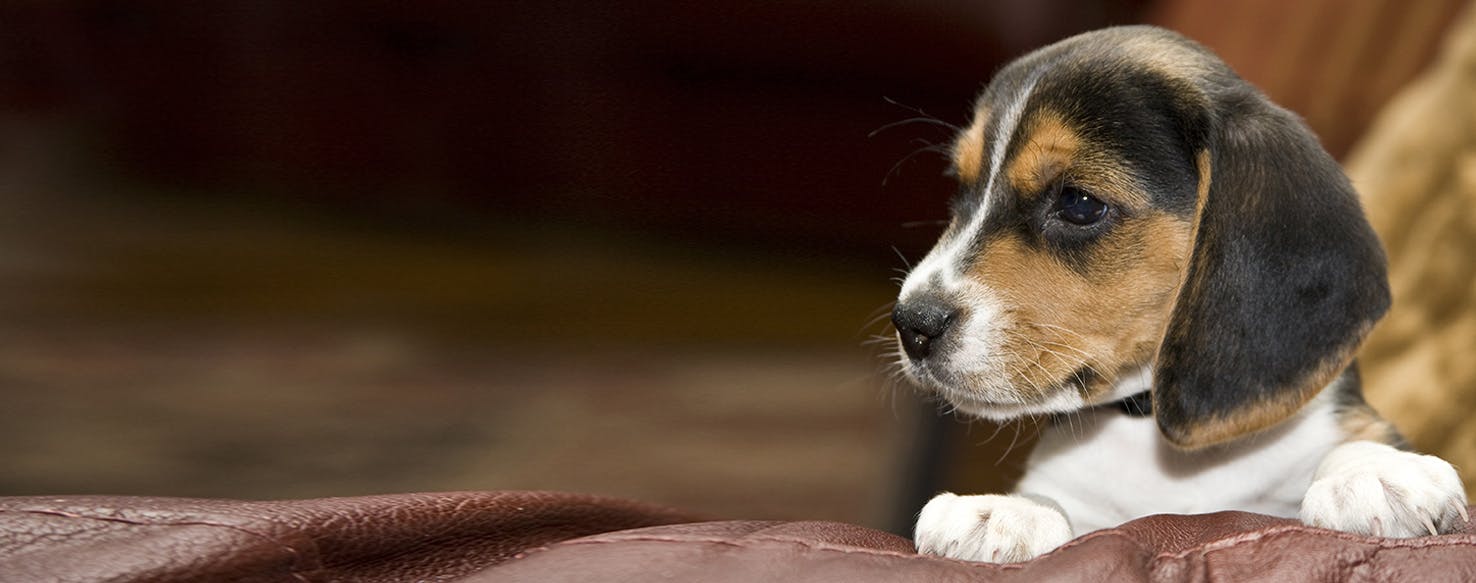- Home
- The Daily Wag!
- Senses
- Can Dogs Sense Carbon Monoxide?

It's often been thought that dogs have a sixth sense about many things. There have been millions of anecdotal tellings of dogs alerting their owners to natural disasters, terrible storms, strangers with malicious intent, and even to medical emergencies. It's even been thought that dogs can detect or sense carbon monoxide before it affects their humans. That's a bold claim, and necessary to ask the question - "is it really true?"
In a way, it's not true. Dogs aren't able to sense or smell carbon monoxide, so they're not able to alert their owners to its presence before it happens or when the first leak of carbon monoxide is evident, but it is true that dogs will be affected by carbon monoxide much quicker than humans.
So, while it's highly unlikely that your dog will sense carbon monoxide, they can still help bring your attention to its presence by feeling the effects early on. If you're interested in what signs you should watch for to determine if your dog is feeling the effects of carbon monoxide, read on!
Because pets are far more susceptible to carbon monoxide then humans, our pets are going to be much more vulnerable when carbon monoxide strikes. While that can be a saving grace for you (you'll know the signs early on) that also means that you'll have to act quickly to help heal your doggo.
The first sign that your dog is being affected by carbon monoxide is a sleepy, lethargic, or tired pup. Carbon monoxide poisoning is known for making people and animals weak and sleepy, so if you notice your dog behaving this way, make sure you act fast.
It's also common for dogs to have reddened gums or skin, experience stomach issues, lack coordination, trip, fall, and stumble, as well as experience collapse and shock-like symptoms. If you notice your dog going through any of these symptoms, get him or her to the vet immediately.
Body Language
Here are a few body language cues that might suggest that your dog is reacting to carbon monoxide:
- Panting
- Weakness
- Yawning
- Lack Of Focus
- Sweaty Paws
- Tail Tucking
- Sleepiness
Other Signs
There are a few other signs you should look out for, too, like:
- Extreme Lethargy
- Red Skin
- Red Gums
- Vomiting Or Diarrhea
- Stumbling, Falling, Or Tripping
- Gastrointestinal Upset
- Lack Of Coordination
Carbon monoxide has very similar effects and long-term repercussions for animals as it does for humans. If your dog is exposed to carbon monoxide, it's likely that he or she will have to deal with a few common long-term effects like lung poisoning, memory impairment, changes in emotional stability, and chronic nausea.
Historically, smaller animals (and smaller humans) will feel the effects much faster than average-sized people. Because their immune systems are smaller, they're much more susceptible to CO poisoning - in fact, they can be affected as soon as 10 minutes after a leak happens. If your dog is affected by CO poisoning, it's likely they'll have to deal with oxygen therapy and will need plenty of time to heal.
To better understand why dogs - with their superhero level smells and hearing - can't detect carbon monoxide, it's best to try to first understand what exactly carbon monoxide is. Carbon monoxide, otherwise called CO, is an odorless, colorless, nonirritating gas. Nobody, not even your super-star-smelling doggo can sniff out carbon monoxide because it simply doesn't have a scent.
When CO is absorbed into someone's bloodstream, it forms a compound that causes hypoxia, also known as reduced oxygen supply, of the heart and the brain. If your dog does sense carbon monoxide or alert you to its presence, it's not because they're able to smell the gas - rather, they heard the CO alarm when you didn't or they're able to smell fuel or other products burning that caused the CO leak in the first place.
Because your dog relies on their sense of smell and taste in order to do most of the info collecting, it's not likely that you'll be able to train your dog to detect carbon monoxide. Typically, when training your dog to alert you to something, they need to be able to detect a change in the environment - the sounds and the smells. With carbon monoxide, there's no smell, taste, or sound to detect, so it's nearly impossible to train your pooch to alert to it.
You can, however, train your dog to pay attention to your carbon monoxide alarm if you're unable to hear it. Train your dog to react in a specific way when your carbon monoxide alarm goes off. You can do this by using the sound and associating a certain action for your dog.
For example, train your dog to understand that when that sound happens, he or she should run to your room and start barking. When he or she does this, reward them with a treat. Do this consistently until your dog understands the link between the sound, the action, and the treat.
Have questions or concerns about your pet?
Chat with a veterinary professional in the Wag! app 24/7.
Get Vet ChatWritten by a Great Dane lover Hanna Marcus
Veterinary reviewed by:
Published: 06/19/2018, edited: 04/06/2020
More articles by Hanna Marcus

